Navigating the complexities of modern car coding, especially when dealing with battery replacements and VCDS adjustments, requires specialized knowledge. At CAR-CODING.EDU.VN, we offer expert remote automotive coding support to ensure your vehicle operates flawlessly. Whether you’re activating hidden features or require ECU programming, our team is ready to provide efficient and secure assistance.
Contents
- 1. Understanding the VCDS Battery Vendor List and Car Coding
- 1.1 Why is the VCDS Battery Vendor List Important?
- 1.2 What Happens If the Battery Isn’t Coded Correctly?
- 1.3 What Does a Typical BEM Code Look Like?
- 1.4 Where Can I Find the Correct VCDS Battery Vendor List?
- 2. Key Components of the BEM Code
- 2.1 Part Number Explained
- 2.2 Vendor Codes Decoded
- 2.3 Importance of the Serial Number
- 3. Step-by-Step Guide to Coding a New Battery with VCDS
- 3.1 Connecting VCDS to Your Vehicle
- 3.2 Accessing the Battery Regulation Module
- 3.3 Entering the New Battery Information
- 3.4 Verifying the Coding
- 4. Troubleshooting Common Coding Issues
- 4.1 Incorrect BEM Code Errors
- 4.2 Communication Problems with the Module
- 4.3 Software Compatibility Issues
- 5. VCDS Battery Vendor List for Different Car Models
- 5.1 Coding for Audi Vehicles
- 5.2 Coding for Volkswagen Vehicles
- 5.3 Coding for Skoda Vehicles
- 5.4 Coding for SEAT Vehicles
- 6. Advanced Coding Options with VCDS
- 6.1 Activating Hidden Features
- 6.2 Customizing Vehicle Settings
- 6.3 Performing Diagnostic Tests
- 7. The Risks of Incorrect Coding and How to Avoid Them
- 7.1 Potential Damage to the ECU
- 7.2 Disabling Essential Features
- 7.3 Triggering Warning Lights
- 8. Benefits of Professional Remote Coding Support
- 8.1 Access to Expert Knowledge
- 8.2 Reduced Risk of Errors
- 8.3 Time Savings
- 8.4 Convenience
- 9. Choosing the Right VCDS Tool and Software
- 9.1 Ensuring Vehicle Compatibility
- 9.2 Assessing Ease of Use
- 9.3 Evaluating Features Offered
- 9.4 Considering Customer Support
- 10. Real-World Examples of Successful Coding with VCDS
- 10.1 Activating Hidden Features on a VW Golf
- 10.2 Customizing Lighting Settings on an Audi A4
- 10.3 Diagnosing ABS Issues on a Skoda Octavia
- FAQ: Your Questions About VCDS Battery Vendor List Answered
- Is it safe to code my car myself, or should I seek professional help?
- What is the process for remote coding support from CAR-CODING.EDU.VN?
- How much does remote coding support typically cost?
- What types of vehicles and features does CAR-CODING.EDU.VN support?
- What equipment do I need to receive remote coding support?
- How do I know if the coding was successful?
- What if something goes wrong during the coding process?
- Can I revert to the original settings if I don’t like the changes?
- How long does a typical remote coding session take?
- Is my vehicle’s data secure during remote coding?
1. Understanding the VCDS Battery Vendor List and Car Coding
What is the significance of the Vcds Battery Vendor List in car coding, and how does it impact vehicle performance?
The VCDS (VAG-COM Diagnostic System) battery vendor list is a critical component in car coding, particularly when replacing a vehicle’s original battery. This list allows technicians to properly configure the Battery Energy Management (BEM) system to recognize the new battery’s specifications, ensuring optimal charging and performance. Proper coding is essential to prevent overcharging, undercharging, or other electrical issues that can arise from an incorrectly configured battery management system. Furthermore, understanding and utilizing the VCDS battery vendor list correctly ensures that the vehicle’s systems communicate effectively with the new battery, maintaining the longevity and efficiency of both the battery and the vehicle’s electrical components.
1.1 Why is the VCDS Battery Vendor List Important?
The VCDS battery vendor list is vital because it enables precise configuration of the Battery Energy Management (BEM) system. This is essential for matching the vehicle’s charging parameters with the new battery’s specifications. Incorrect coding can lead to numerous issues, including reduced battery life, suboptimal performance, and potential damage to electrical components. The BEM system monitors and controls the battery’s charging process, and accurate data from the vendor list ensures it operates within safe and efficient parameters. Properly utilizing the VCDS battery vendor list promotes vehicle reliability and prevents costly repairs.
1.2 What Happens If the Battery Isn’t Coded Correctly?
If the battery isn’t coded correctly, several adverse effects can occur. The vehicle may overcharge the battery, leading to premature failure, or undercharge it, resulting in poor performance and starting issues. Inaccurate coding can also trigger warning lights on the dashboard and disrupt other electronic systems. Without proper coding, the BEM system won’t accurately monitor the battery’s health, potentially causing unexpected breakdowns. Correct coding is crucial for maintaining vehicle performance and preventing electrical problems.
1.3 What Does a Typical BEM Code Look Like?
A typical Battery Energy Management (BEM) code consists of a 26-character string divided into three parts: the 11-character battery part number, the 3-character vendor code, and the 10-character serial number. An example of a full BEM code is: 000915105DD VA0 251016AGRA. This code provides essential information to the vehicle’s Battery Control Module (BCM) for proper battery management. The BEM code must be entered accurately using VCDS to ensure the vehicle recognizes the battery’s specifications.
1.4 Where Can I Find the Correct VCDS Battery Vendor List?
The correct VCDS battery vendor list can be found in several locations. Ross-Tech’s VCDS software often includes an updated database, or you can consult online forums and automotive coding communities for shared information. Battery manufacturers sometimes provide specific coding details for their products. Ensure the information is verified and reliable before use. Consulting with expert services like CAR-CODING.EDU.VN can provide access to the most accurate and up-to-date vendor lists.
2. Key Components of the BEM Code
What are the key components of the BEM code, and how do they affect the battery’s performance within the vehicle’s electrical system?
The BEM code is composed of three main parts: the battery part number, the vendor code, and the serial number. The battery part number specifies the battery’s type, capacity, and electrical characteristics, informing the vehicle’s charging algorithm. The vendor code identifies the battery manufacturer, allowing the system to apply specific charging profiles if available. The serial number is a unique identifier for tracking battery history and ensuring proper warranty management. These components together ensure the vehicle’s electrical system manages the battery effectively, optimizing its performance and lifespan. Proper understanding and coding of these elements are crucial for maintaining vehicle health.
2.1 Part Number Explained
The battery part number is a crucial identifier that specifies the battery’s characteristics, such as its amp-hour rating and type (AGM, EFB, or conventional). For example, in the part number 000915105DD, the DD suffix indicates specific electrical properties. This number ensures that the vehicle’s charging system matches the battery’s requirements, preventing overcharging or undercharging. Selecting the correct part number is essential for optimal battery performance. The vehicle’s BEM system relies on this data to manage the battery effectively.
2.2 Vendor Codes Decoded
Vendor codes are three-character identifiers that specify the battery manufacturer. Common vendor codes include VA0 for Varta, MLA for Moll, and JCB for JCI/JCB. These codes may allow the vehicle to apply specific charging profiles optimized for the manufacturer’s batteries. Although the impact of these codes may vary, they are a required part of the BEM code and should be entered accurately. Using the correct vendor code contributes to precise battery management.
2.3 Importance of the Serial Number
The serial number serves as a unique identifier for the battery, enabling the vehicle to track its history and performance. This number typically includes the manufacturing date and an arbitrary alphanumeric code. The BCM stores battery codes and their history based on serial numbers, which helps in monitoring battery health. While any ten alphanumeric characters can be used, providing a valid serial number ensures the system can accurately track the battery’s performance over time. Using a unique serial number is particularly useful when replacing a battery to ensure a “fresh start” in the system’s memory.
3. Step-by-Step Guide to Coding a New Battery with VCDS
What are the essential steps to correctly code a new battery using VCDS, and what precautions should be taken during the process?
To correctly code a new battery with VCDS, first connect the VCDS interface to your vehicle and open the software. Navigate to the Battery Regulation module. Enter the new battery’s BEM code, ensuring the part number, vendor code, and serial number are accurate. Save the changes and verify the coding. Before starting, ensure your VCDS software is up-to-date and your vehicle’s battery is fully charged. Always back up the original coding before making changes and proceed with caution to avoid errors. Following these steps carefully will ensure your new battery is properly recognized and managed by the vehicle’s electrical system.
3.1 Connecting VCDS to Your Vehicle
To connect VCDS to your vehicle, locate the OBD-II port, typically found under the dashboard. Plug the VCDS interface cable into the port and connect the other end to your laptop. Turn on the ignition but do not start the engine. Open the VCDS software on your laptop and test the connection. A successful connection is essential for accurate coding. Follow the software’s prompts to ensure proper communication with the vehicle’s control modules.
3.2 Accessing the Battery Regulation Module
After connecting VCDS, access the Battery Regulation module by selecting “Control Modules” and then “61-Battery Regulation.” This module allows you to view and modify the battery’s coding parameters. Ensure you are in the correct module before making any changes. The module provides access to critical settings for managing the battery’s performance. Verify that the module is communicating correctly before proceeding.
3.3 Entering the New Battery Information
In the Battery Regulation module, enter the new battery’s BEM code. This includes the part number, vendor code, and serial number. Double-check each entry for accuracy. Incorrect data can lead to charging issues and reduced battery life. Save the new information to update the system. Providing precise data ensures the vehicle manages the new battery effectively.
3.4 Verifying the Coding
After entering the new battery information, verify the coding by reading the measuring blocks within the Battery Regulation module. This allows you to confirm that the new battery parameters have been successfully stored. Check for any error codes and address them promptly. Accurate verification ensures the system recognizes the new battery correctly. Regularly monitoring the battery’s performance after coding helps identify any potential issues.
4. Troubleshooting Common Coding Issues
What are common coding issues encountered when using the VCDS battery vendor list, and how can they be resolved efficiently?
Common coding issues when using the VCDS battery vendor list include incorrect BEM codes, communication errors with the module, and software compatibility problems. To resolve these, double-check the BEM code for accuracy and ensure the VCDS interface is properly connected. Update the VCDS software to the latest version to address compatibility issues. If communication errors persist, check the vehicle’s wiring and the VCDS interface cable for damage. If problems continue, consult with expert support services like CAR-CODING.EDU.VN for professional assistance.
4.1 Incorrect BEM Code Errors
Incorrect BEM code errors are a frequent issue. Double-check the part number, vendor code, and serial number for typos. Verify the information against the battery manufacturer’s specifications. Even small errors can prevent successful coding. Re-enter the code carefully and save the changes. Accurate BEM codes are crucial for proper battery management.
4.2 Communication Problems with the Module
Communication problems can occur if the VCDS interface isn’t properly connected or if there’s an issue with the vehicle’s wiring. Ensure the cable is securely plugged into the OBD-II port and your laptop. Check the vehicle’s wiring for damage or corrosion. Restart the VCDS software and try again. If the problem persists, the interface cable may need to be replaced. Stable communication is essential for coding success.
4.3 Software Compatibility Issues
Software compatibility issues can arise if the VCDS software is outdated or incompatible with the vehicle’s control modules. Ensure you are using the latest version of VCDS. Check the Ross-Tech website for compatibility information. Updating the software can resolve many communication and coding errors. Regularly updating VCDS ensures it can communicate effectively with newer vehicle models.
5. VCDS Battery Vendor List for Different Car Models
How does the VCDS battery vendor list vary for different car models, and what considerations are necessary for each?
The VCDS battery vendor list varies for different car models due to differences in battery types, sizes, and BEM system configurations. For example, a Volkswagen Golf may use a different battery part number and vendor code than an Audi A4. When coding, ensure you select the correct battery specifications that match your vehicle’s make, model, and year. Consulting model-specific forums or professional databases can help ensure accuracy. Using the wrong VCDS battery vendor list can lead to charging issues and electrical malfunctions. Always verify the correct information before coding.
5.1 Coding for Audi Vehicles
Coding for Audi vehicles requires precise attention to detail. Audi models often use sophisticated BEM systems that need accurate data to manage the battery effectively. Ensure the part number, vendor code, and serial number match the battery’s specifications and the vehicle’s requirements. Consult Audi-specific resources for accurate coding information. Proper coding ensures the vehicle’s electrical system functions optimally.
5.2 Coding for Volkswagen Vehicles
Coding for Volkswagen vehicles involves similar considerations. VW models also rely on accurate BEM data for proper battery management. Verify the VCDS battery vendor list information against the battery’s specifications. Use VW-specific resources and forums to ensure coding accuracy. Precise coding prevents charging issues and maintains electrical system performance.
5.3 Coding for Skoda Vehicles
Skoda vehicles, while related to VW, may have slight variations in their battery management systems. Always confirm the correct VCDS battery vendor list information specific to the Skoda model. Using generic VW codes may not always be appropriate. Consult Skoda-specific coding resources for accuracy. Correct coding supports reliable battery performance.
5.4 Coding for SEAT Vehicles
SEAT vehicles, also part of the VW group, require specific coding data. Ensure the VCDS battery vendor list information matches the SEAT model and battery specifications. Avoid using generic codes without verification. Refer to SEAT-specific resources for accurate coding guidelines. Proper coding is crucial for maintaining the vehicle’s electrical health.
6. Advanced Coding Options with VCDS
What advanced coding options are available with VCDS beyond battery replacement, and how can they enhance vehicle functionality?
Beyond battery replacement, VCDS offers advanced coding options such as activating hidden features, customizing vehicle settings, and performing diagnostic tests. You can enable features like cornering lights, customize the behavior of windows and mirrors, and adjust lighting settings. VCDS also allows you to diagnose and clear fault codes, improving overall vehicle performance and personalization. These advanced options require careful use and knowledge to avoid unintended consequences. Consulting with experts like CAR-CODING.EDU.VN is recommended for complex modifications.
6.1 Activating Hidden Features
VCDS allows you to unlock hidden features in your vehicle, such as enabling cornering lights, customizing the gauge cluster display, and activating additional menu options. These features are often pre-programmed but disabled by default. Activating them can enhance your driving experience and add convenience. Research the specific coding for your vehicle model to ensure compatibility and avoid errors.
6.2 Customizing Vehicle Settings
You can customize various vehicle settings with VCDS, including adjusting the sensitivity of parking sensors, modifying the behavior of windows and mirrors, and personalizing the locking and unlocking functions. These customizations allow you to tailor the vehicle to your preferences. Always back up the original settings before making changes. Customizing vehicle settings can improve comfort and convenience.
6.3 Performing Diagnostic Tests
VCDS is a powerful tool for performing diagnostic tests on your vehicle. You can read and clear fault codes, monitor live data, and perform output tests to diagnose issues with various systems. Regular diagnostic tests can help identify potential problems early and prevent costly repairs. Understanding how to interpret diagnostic data is essential for effective troubleshooting.
7. The Risks of Incorrect Coding and How to Avoid Them
What are the potential risks of incorrect coding in automotive systems, and what measures can be taken to avoid them?
Incorrect coding in automotive systems can lead to a range of issues, from minor inconveniences to critical system failures. Risks include disabling essential features, triggering warning lights, causing electrical malfunctions, and even damaging the ECU. To avoid these risks, always back up your original coding, double-check all entries for accuracy, and research the specific coding for your vehicle model. Use reliable sources for coding information and consider seeking assistance from experts like CAR-CODING.EDU.VN for complex modifications.
7.1 Potential Damage to the ECU
One of the most severe risks of incorrect coding is potential damage to the Engine Control Unit (ECU). Incorrect coding can corrupt the ECU’s software, leading to system failures and costly repairs. Always proceed with caution and ensure you have a thorough understanding of the coding process before making changes. The ECU is a critical component, and any damage can significantly impact vehicle performance.
7.2 Disabling Essential Features
Incorrect coding can inadvertently disable essential features in your vehicle, such as ABS, airbags, or traction control. Disabling these features can compromise safety and vehicle performance. Always verify that all essential features are functioning correctly after coding. Prioritize safety when making any modifications.
7.3 Triggering Warning Lights
Incorrect coding often triggers warning lights on the dashboard, indicating a problem with one or more systems. These warning lights can be confusing and may require further diagnostic testing to resolve. Always address warning lights promptly to prevent potential issues. Accurate coding helps avoid unnecessary warning lights.
8. Benefits of Professional Remote Coding Support
What are the key benefits of seeking professional remote coding support, particularly from a provider like CAR-CODING.EDU.VN?
The key benefits of professional remote coding support include access to expert knowledge, reduced risk of errors, time savings, and convenience. Providers like CAR-CODING.EDU.VN offer specialized expertise in automotive coding, ensuring accurate and safe modifications. Remote support eliminates the need to visit a physical location, saving time and effort. Professional support minimizes the risk of damaging your vehicle’s systems through incorrect coding. With expert guidance, you can confidently enhance your vehicle’s functionality.
8.1 Access to Expert Knowledge
Professional remote coding support provides access to expert knowledge and experience in automotive coding. Experts can provide guidance on the correct coding procedures, troubleshoot issues, and ensure that modifications are safe and effective. Their expertise minimizes the risk of errors and potential damage to your vehicle’s systems. Expert knowledge is invaluable for complex coding tasks.
8.2 Reduced Risk of Errors
One of the primary benefits of professional support is the reduced risk of errors. Coding errors can lead to various issues, from minor inconveniences to major system failures. Professionals have the knowledge and experience to avoid these errors, ensuring that coding is performed correctly and safely. Minimizing errors protects your vehicle’s functionality and performance.
8.3 Time Savings
Professional remote coding support saves you time by handling the coding process efficiently. Experts can quickly identify the correct coding parameters and perform the necessary modifications, reducing the time and effort required. Time savings are especially valuable for complex coding tasks. Efficient support allows you to focus on other priorities.
8.4 Convenience
Remote coding support offers unparalleled convenience. You can receive expert assistance without leaving your location, saving time and travel costs. Remote support is available at your convenience, allowing you to schedule coding sessions that fit your needs. Convenient support makes automotive coding accessible and hassle-free.
9. Choosing the Right VCDS Tool and Software
What factors should be considered when choosing the right VCDS tool and software for automotive coding?
When choosing the right VCDS tool and software, consider compatibility with your vehicle’s make and model, ease of use, features offered, and customer support. Ensure the tool supports the necessary coding functions for your vehicle. Opt for user-friendly software with clear instructions and helpful resources. Look for tools with advanced features like data logging and fault code analysis. Reliable customer support can provide assistance when needed. Selecting the right VCDS tool and software ensures effective and safe automotive coding.
9.1 Ensuring Vehicle Compatibility
Vehicle compatibility is a critical factor when choosing a VCDS tool. Ensure the tool supports your vehicle’s make, model, and year. Check the manufacturer’s website for compatibility information. Using an incompatible tool can lead to communication errors and potential damage to the vehicle’s systems. Prioritize compatibility to ensure safe and effective coding.
9.2 Assessing Ease of Use
Ease of use is essential for efficient coding. Choose VCDS software with a user-friendly interface, clear instructions, and helpful resources. A complex and difficult-to-navigate interface can lead to errors and frustration. Opt for software that is intuitive and easy to learn. User-friendly software enhances the coding experience.
9.3 Evaluating Features Offered
Evaluate the features offered by the VCDS tool and software. Look for tools with advanced features such as data logging, fault code analysis, and output testing. These features can enhance your ability to diagnose and troubleshoot issues. Choose a tool that offers the features you need for your coding tasks. Comprehensive features provide greater control and flexibility.
9.4 Considering Customer Support
Reliable customer support is invaluable when using VCDS tools. Choose a provider that offers responsive and helpful customer support. Good customer support can assist with troubleshooting, provide guidance on coding procedures, and answer questions. Reliable support ensures you can get help when needed. Accessible customer support enhances the coding experience.
10. Real-World Examples of Successful Coding with VCDS
Can you provide real-world examples of successful coding projects using VCDS, and what were the outcomes?
Successful coding projects with VCDS include activating hidden features on a VW Golf, customizing lighting settings on an Audi A4, and diagnosing ABS issues on a Skoda Octavia. In one case, activating cornering lights on a VW Golf enhanced visibility and safety. Customizing ambient lighting on an Audi A4 improved the interior aesthetics. Diagnosing and clearing ABS fault codes on a Skoda Octavia restored braking performance. These examples highlight VCDS’s versatility and effectiveness in enhancing vehicle functionality and performance.
10.1 Activating Hidden Features on a VW Golf
Activating hidden features on a VW Golf can significantly enhance its functionality. For example, enabling the “coming home” and “leaving home” lights can improve convenience and safety. These features automatically activate the headlights when unlocking or locking the vehicle. VCDS makes it easy to unlock these pre-programmed features.
10.2 Customizing Lighting Settings on an Audi A4
Customizing lighting settings on an Audi A4 can improve both aesthetics and functionality. Adjusting the brightness of ambient lighting, enabling dynamic turn signals, and customizing the behavior of daytime running lights are all possible with VCDS. These modifications allow you to personalize the vehicle’s lighting to your preferences.
10.3 Diagnosing ABS Issues on a Skoda Octavia
VCDS is an invaluable tool for diagnosing ABS issues on a Skoda Octavia. By reading fault codes and monitoring live data, you can quickly identify the source of the problem. Clearing fault codes and performing output tests can help resolve ABS issues and restore braking performance. Accurate diagnosis ensures effective repairs.
CAR-CODING.EDU.VN is your trusted partner for all your automotive coding needs. Located at 100 Tech Innovation Dr, Suite 500, San Jose, CA 95110, United States, we offer expert remote coding support to ensure your vehicle operates flawlessly. Contact us via Whatsapp at +1 (641) 206-8880 or visit our website at CAR-CODING.EDU.VN to learn more.
FAQ: Your Questions About VCDS Battery Vendor List Answered
Below are frequently asked questions that you may find helpful.
Is it safe to code my car myself, or should I seek professional help?
Coding your car yourself can be safe if you have the knowledge, experience, and the right tools. However, incorrect coding can lead to serious issues, so seeking professional help from CAR-CODING.EDU.VN is often recommended, especially for complex modifications.
What is the process for remote coding support from CAR-CODING.EDU.VN?
The process involves connecting your vehicle to a computer using VCDS, then allowing our experts at CAR-CODING.EDU.VN to remotely access your system and perform the necessary coding. We provide step-by-step guidance throughout the process.
How much does remote coding support typically cost?
The cost of remote coding support varies depending on the complexity of the task. Contact CAR-CODING.EDU.VN for a personalized quote based on your specific needs.
What types of vehicles and features does CAR-CODING.EDU.VN support?
CAR-CODING.EDU.VN supports a wide range of vehicle makes and models, including Audi, Volkswagen, Skoda, and SEAT. We offer support for various features, including battery coding, activating hidden features, and customizing vehicle settings.
What equipment do I need to receive remote coding support?
You will need a VCDS interface cable, a laptop with a stable internet connection, and the VCDS software installed. CAR-CODING.EDU.VN will provide guidance on any additional requirements.
How do I know if the coding was successful?
After coding, CAR-CODING.EDU.VN will verify the changes and ensure that all systems are functioning correctly. We also recommend monitoring your vehicle’s performance to confirm successful coding.
What if something goes wrong during the coding process?
In the rare event that something goes wrong, CAR-CODING.EDU.VN will provide immediate support to troubleshoot and resolve the issue. Our experts are equipped to handle any coding-related problems.
Can I revert to the original settings if I don’t like the changes?
Yes, before making any changes, we always back up your original coding. This allows you to revert to the previous settings if desired.
How long does a typical remote coding session take?
A typical remote coding session can take anywhere from 30 minutes to a few hours, depending on the complexity of the task. CAR-CODING.EDU.VN will provide an estimated timeline before starting the session.
Is my vehicle’s data secure during remote coding?
Yes, CAR-CODING.EDU.VN uses secure connections and follows strict data privacy protocols to ensure your vehicle’s data is protected during remote coding. Your security is our top priority.
Don’t let coding challenges slow you down. Contact CAR-CODING.EDU.VN today for expert remote coding support. Our team is ready to assist you with all your automotive coding needs. Reach out now and experience the benefits of professional, reliable support.
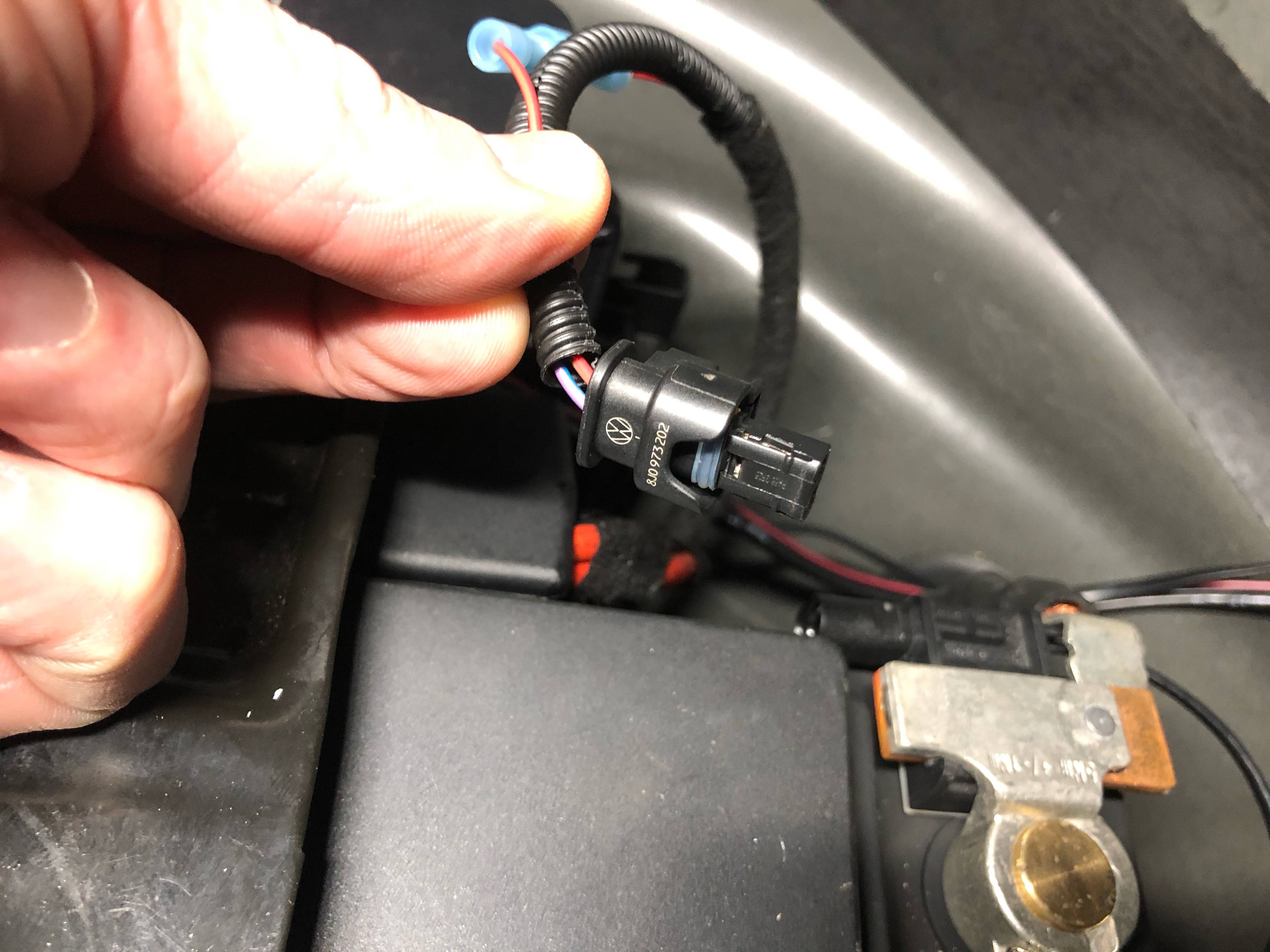 VCDS Interface Cable Connection
VCDS Interface Cable Connection
Connecting VCDS Interface Cable to OBD-II port for car diagnostics, coding, and module programming, ensuring reliable automotive communication.
 High-Amperage Diode for Alternator Voltage Drop
High-Amperage Diode for Alternator Voltage Drop
Installing a high-amperage diode inline to manage alternator output voltage, used in conjunction with car coding adjustments for efficient electrical system control.
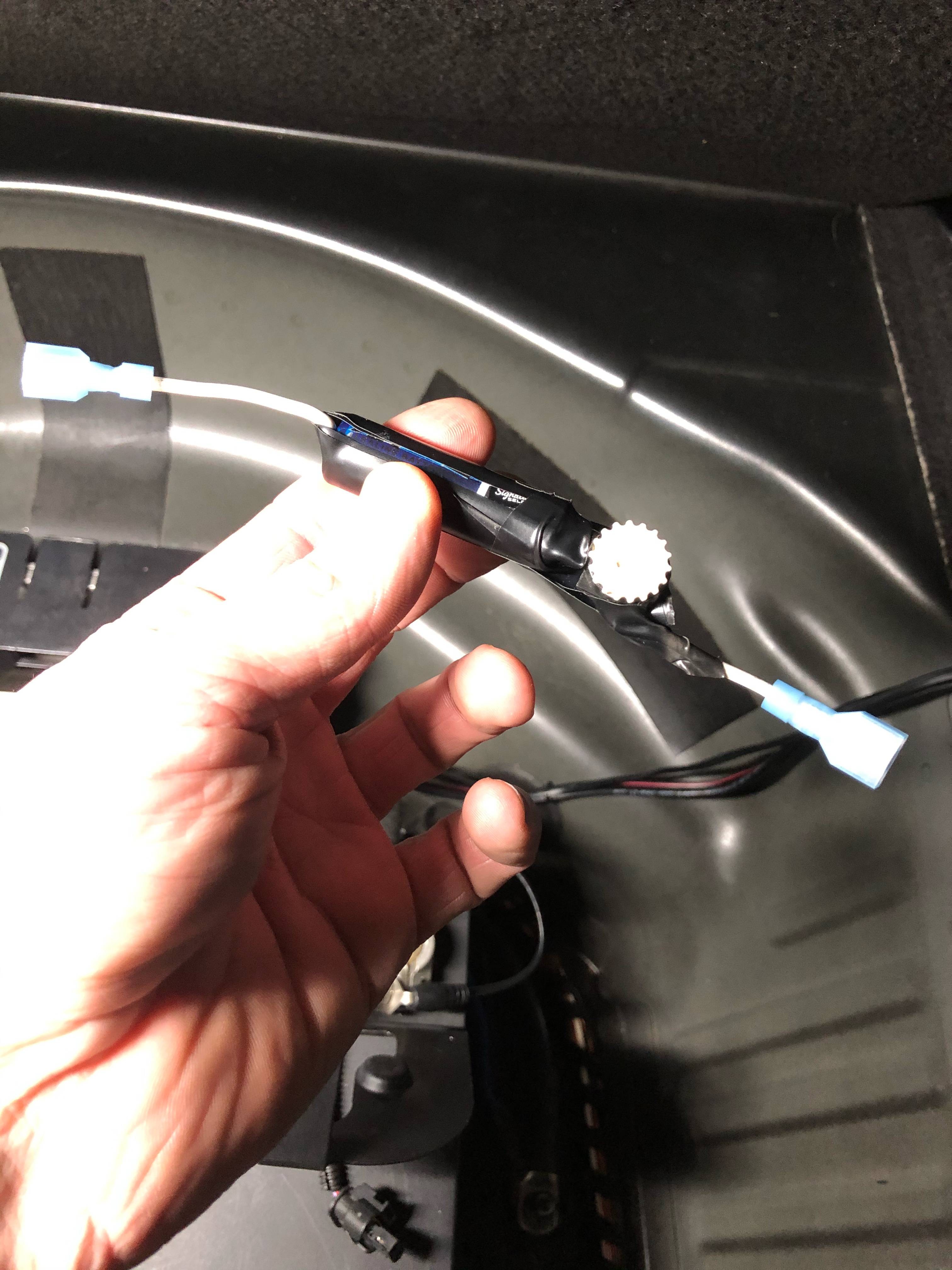 AA Battery in Series with Voltage-Sensing Lead
AA Battery in Series with Voltage-Sensing Lead
Utilizing a 1.5V AA battery in series with the voltage-sensing lead to spoof the BMCM, adjusting perceived voltage for optimized battery charging parameters in car coding.
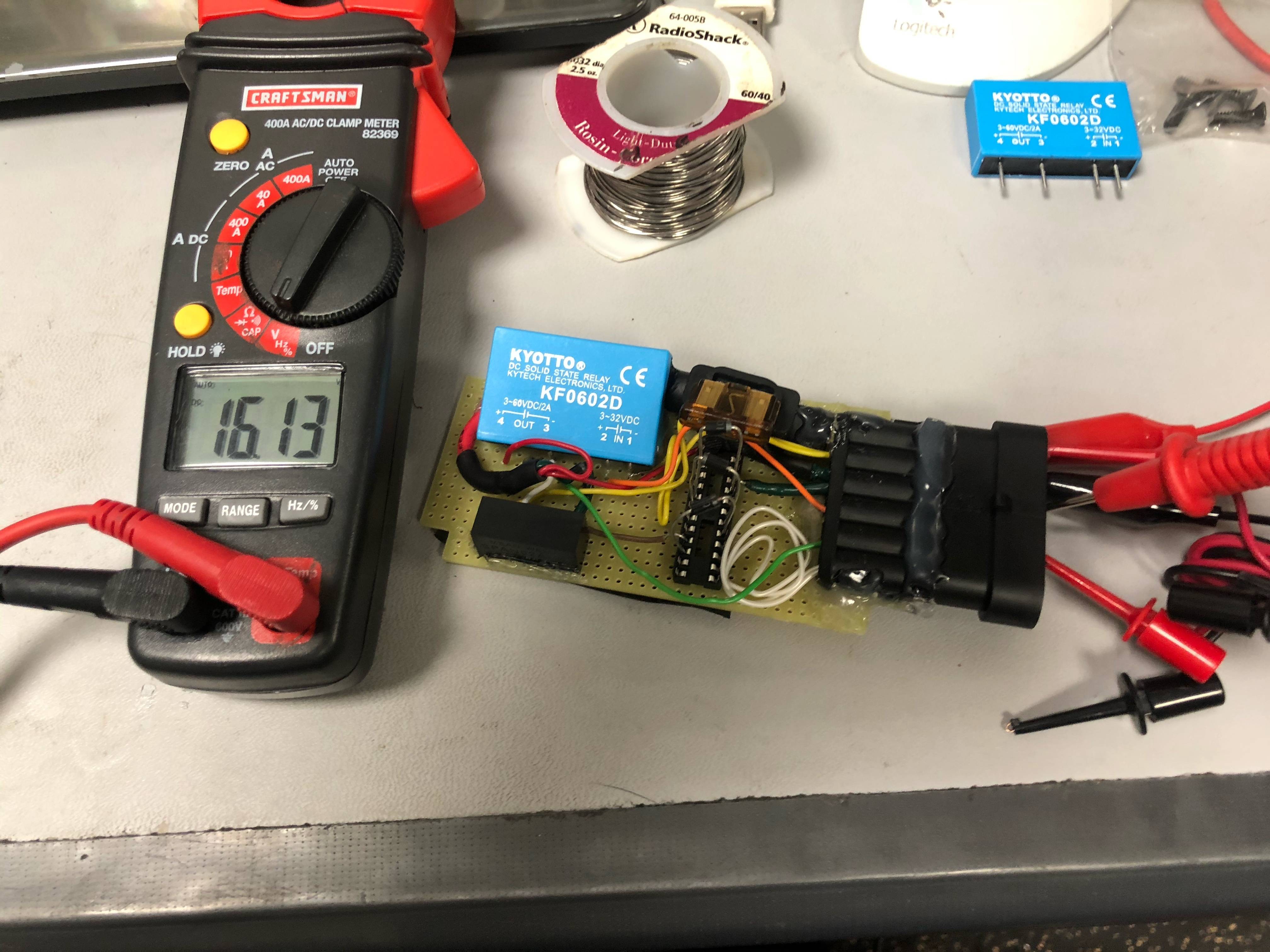 Original Design with IC Socket to Hold Diodes
Original Design with IC Socket to Hold Diodes
Initial design using an IC socket to hold diodes for voltage adjustments, a component of innovative car coding techniques for fine-tuning battery management systems.
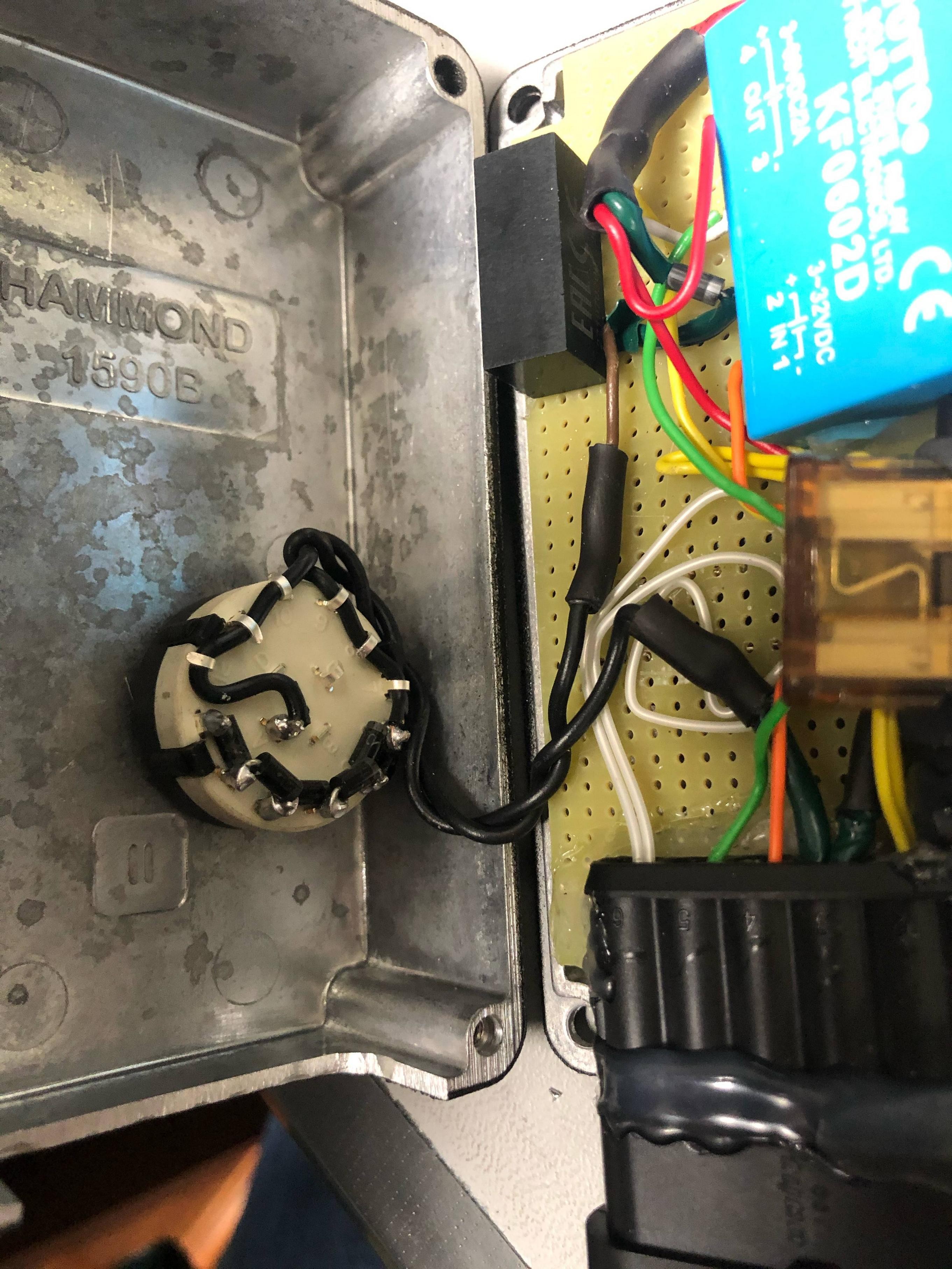 Revised Design with Rotary Switch
Revised Design with Rotary Switch
Enhanced design featuring a rotary switch for precise diode selection, enabling fine-tuned voltage control in car coding modifications for optimized battery performance.
 Diodes Bridging Six Terminals
Diodes Bridging Six Terminals
Detailed view of diodes bridging six terminals, part of a custom setup in car coding projects for achieving precise voltage adjustments and optimized electrical system behavior.
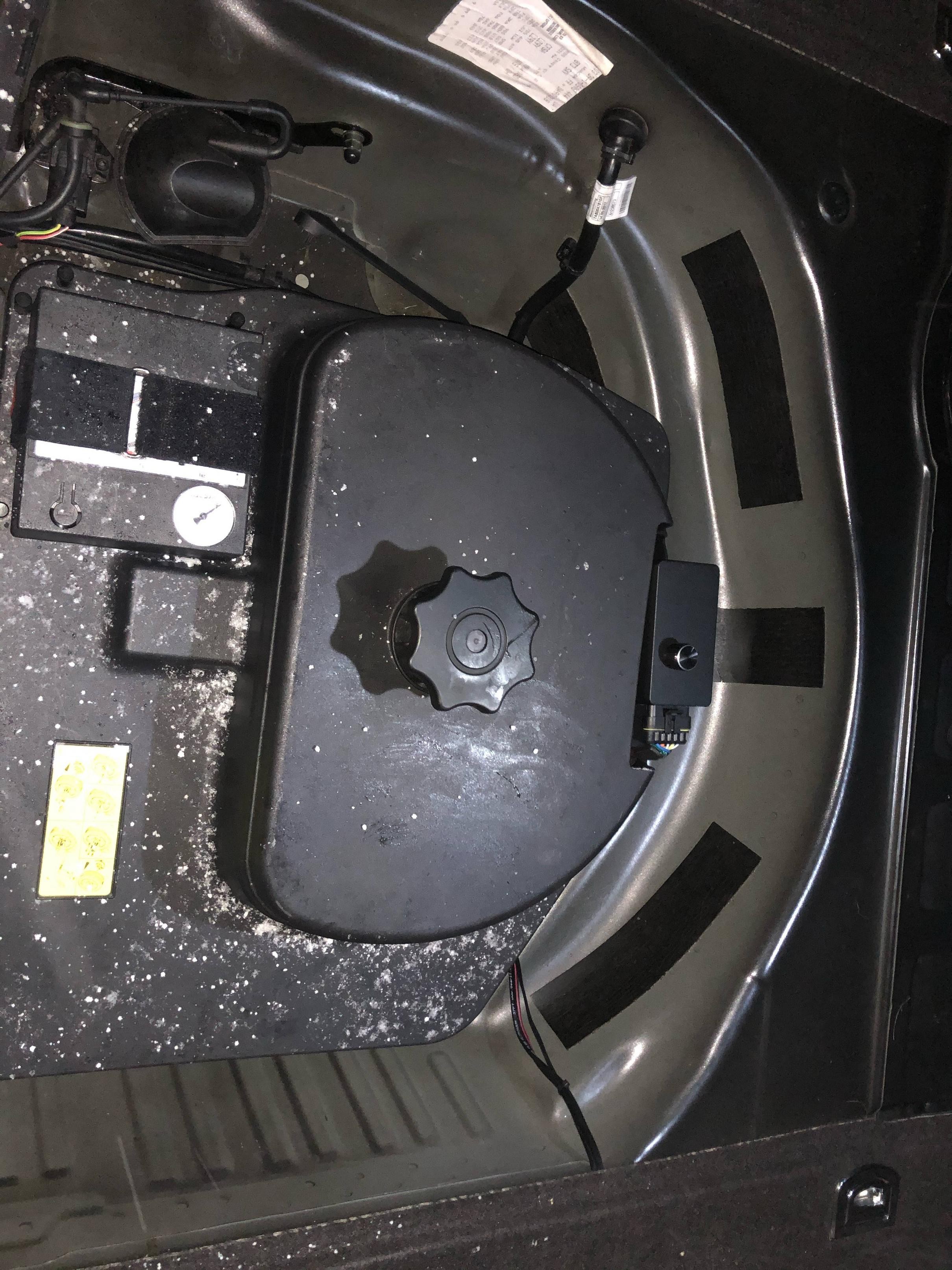 Testing Diode and Wiring Installation
Testing Diode and Wiring Installation
Testing the installation of diodes and wiring for accurate voltage adjustments in car coding, ensuring proper integration and functionality of custom electrical modifications.
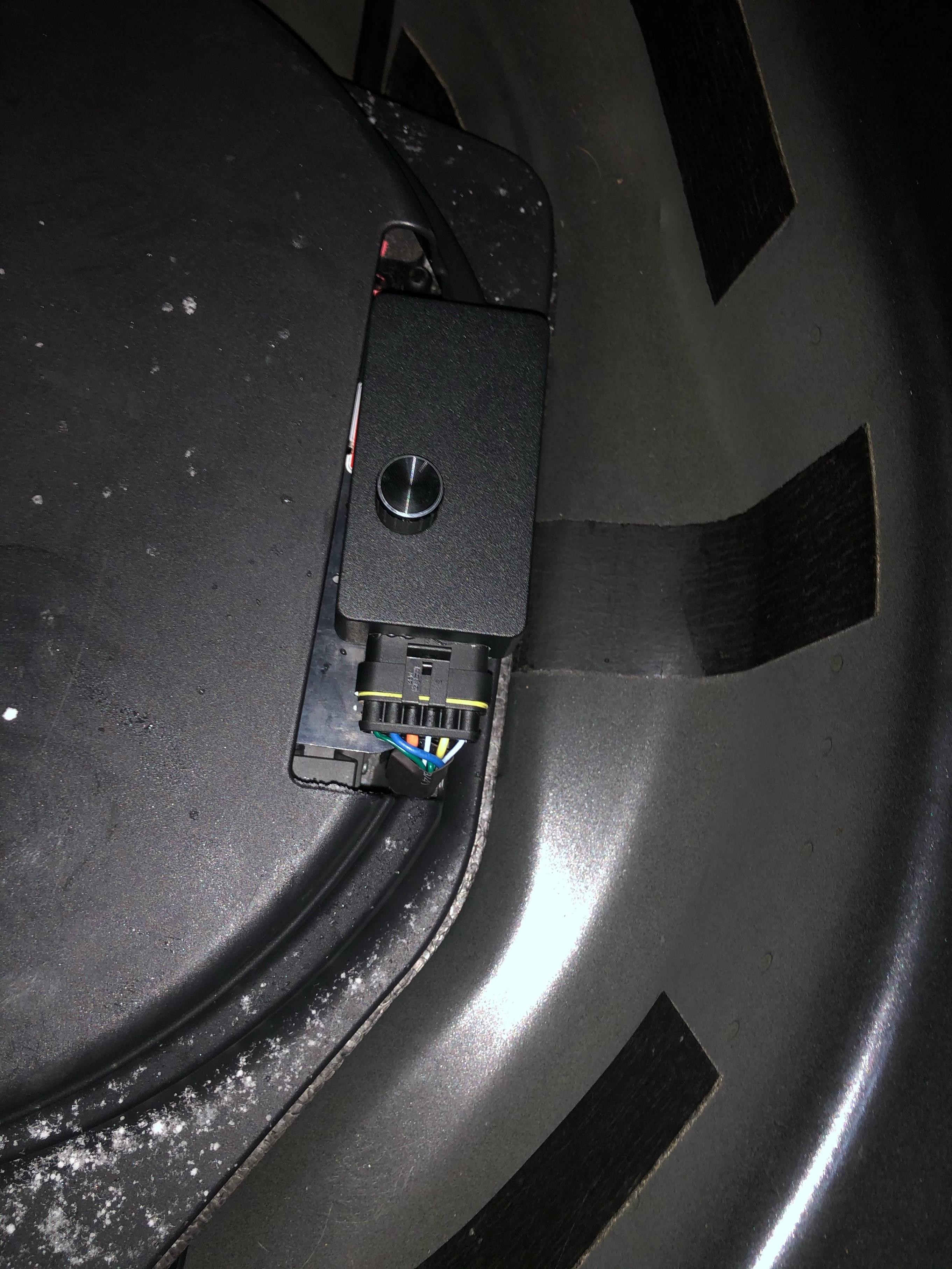 Installing Electronic Components into Electrical Box
Installing Electronic Components into Electrical Box
Electronic components being meticulously installed inside an electrical box, a crucial step in advanced car coding setups for managing and protecting custom circuitry.
 Revised Schematic Diagram
Revised Schematic Diagram
Detailed schematic diagram showcasing an 8-position switch and additional Schottky diodes, enabling fine-tuned voltage boost control for optimized battery management in car coding applications.